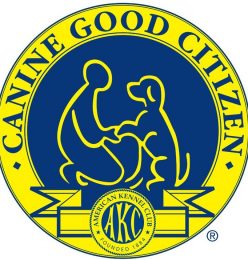What does your dog know

What does your dog know
and how do you use it?
On this gorgeous day in August, it’s not hot or humid and there is a beautiful breeze. I’m sitting outside on the deck drinking my morning coffee while my dogs are happily chasing each other around the garden, when my next-door neighbor comes outside and says hello from across the yards. I smile and wave, recall my dogs so that they do not bark at my neighbor, ask them to lay down on the deck with me and then I say hello and have a lovely conversation with my neighbor.
What do my dogs know? They know how to come when they’re called, under most distractions.
How did I use it? I used it to prevent them from barking at someone I wanted to have a conversation with.
Later on this gorgeous day, as tumbleweeds of German Shepherd fur is blowing throughout my house, because I have every door and window open, I decide that it’s high time I do my weekly vacuuming. Yes I know most people with three dogs vacuum every day, but I do not. Now three German shepherds and a vacuum could be chaos. As I wheel my canister vacuum around and vacuum my home, my dogs could be having a blast chasing it, barking at it, and herding it which could be really irritating to me and could make my vacuum time much longer than it needs to be on this beautiful August day. But instead one dog is laying nicely on her bed, and the other two are following behind me.
What do my dogs know? They know how to “go to place and stay”, and they know how to “get behind”.
How did I use it? I used both behaviors to prevent them from causing chaos while I was vacuuming my home.
So I ask you! What do you dogs know and how do you use it?
So often we see folks spend lots of time and invest money in training their dog useful behaviors but do not use those useful behaviors later on. In the two examples above I could have hollered “no no bad dog” to my dogs as they barked at my neighbor for saying “good morning”, but instead I was proactive and called them to me, told them what to do, and had a conversation without the distraction of barking dogs. In the second example above I could have been trying to vacuum around three dogs, while hollering “no no bad dog” to my three dogs, I could have put them outside and closed my doors (my yard is fenced in), but instead I gave them a job to do.
So what do your dogs know and how do you use it?
Whether you have taken an obedience class or taught your dog a few things on your own without the help of a professional trainer, chances are your dog knows how to “sit” or “down” or “recall”. So how do you use those behaviors, when do you ask for them, and do you as a normal human default to “no no bad dog stop it”. Teaching any dog a few polite obedience behaviors is the key to having a good relationship and harmony with your pet dog.
Teaching your dog what to do in any given situation is really quite simple. First, teach a nice behavior such as “sit”. Second, use that nice behavior; for example while you are preparing dinner if your dog is staring at you, kicking you, pestering you and obnoxiously begging you can ask for “sit” and the dog will know what to do and you will be happy.
Does your dog know how to come when he is called? Does he know how to sit? And when you have company does he get all excited and jump on your company? Well think about what does my dog know and can I use it. If you step away from your guest and you recall your dog, he will not be jumping on your guest because he will be several feet away from your guest. This gives you the opportunity to ask him to sit while your guest enters your home and gets settled.
So the next time you are about to say “no no bad dog stop it cut it out” instead use those seconds to think to yourself what does my dog know and can I use it!



